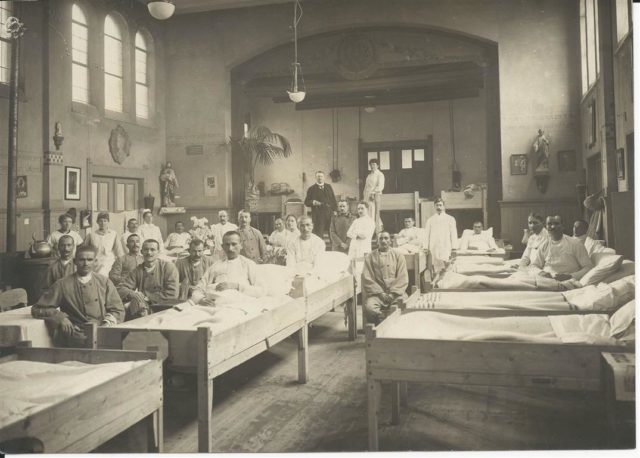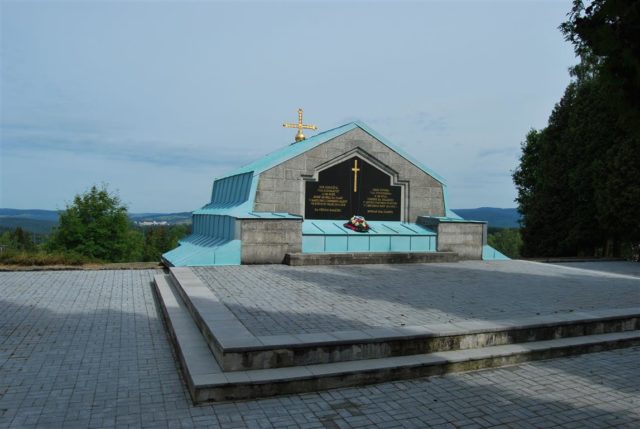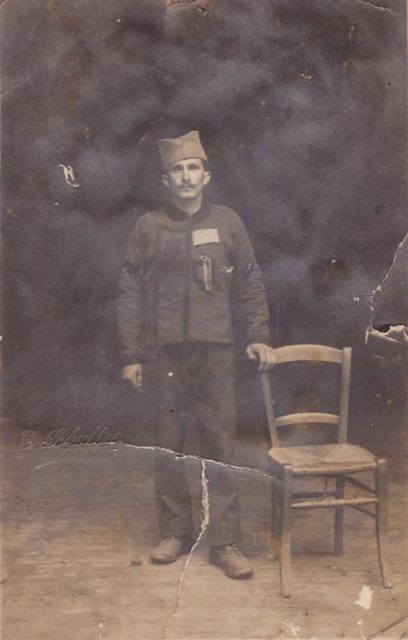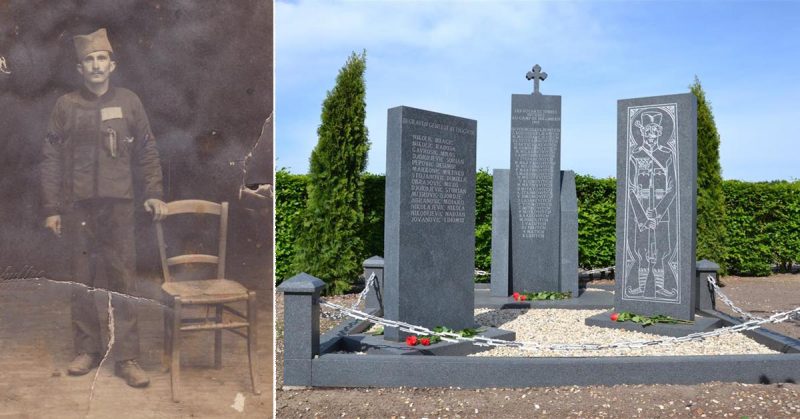War History Online proudly presents this Guest Piece from Fabian Vendrig
with the help of Tanja Vendrig & John Stienen
In a corner of the Dutch Reformed Cemetery in Garderen, on the edge of the forested area of the Veluwe region in the Netherlands, stands a monument to the memory of Serbs who died of the Spanish flu in 1919, in the aftermath of the First World War. A team consisting of two Dutch and one Serbian were determined to find out what happened to those Serbian soldiers who had died in the Netherlands, which was a neutral country during the First World War. They wanted to know how they arrived in the Netherlands, where their remains are now and if possible to find the families of those Serbian First World War soldiers.
Following its neutrality and the Fifth Convention of The Hague, signed at the Second Peace conference of 1907, the Netherlands became the theatre of massive replacement of troops during and after World War I. Already during the Great War any prisoners of belligerents who would reach its neutral territory would be given a relative freedom to move, shelter and food.
Furthermore, an agreement was reached on 2 July 1917 with Germany and Great Britain for the internment of 17000 prisoners on Dutch soil. Thus thousands of refugees and interned or escaped prisoners of war reached the Netherlands, already during the war. These soldiers and civilians were interned in various camps all over the country.
After the war had ended on 11 November 1918, the ports of Rotterdam and Vlissingen were used to repatriate liberated prisoners of war back to their native lands. According to Dutch newspapers in January 1919 a total of 222,347 PoWs had arrived from Germany since mid-November 1918, of which 202,250 had left the country again by mid-January. Among the tens of thousands of prisoners who passed through the Netherlands were 4316 Serbs, 1160 of which via Enschede, on their way home. By 15 January, 130 had thus left the country.

Photo credit: H.A. van Oudgaarden
In January 1919 the Spanish flu struck among these prisoners, many of whom were weak after more than four years of war and mobilization. This was especially true for the Serbs, who had already seen the Balkan Wars in the years before the outbreak of World War I. Between 11 January and 7 February 1919, so in four weeks’ time, 86 Serbian soldiers died in the Netherlands, not because of war, but because of the flu. Another 5 (escaped) Serbs had already died in The Netherlands of different causes before mid-January 1919. These soldiers were buried in the Netherlands Garderen: (29), Nijmegen (21), Lonneker: (17), Dordrecht (15), Hengelo (3), Rotterdam (2), Borger (2) Amersfoort (1) and Nieuw-Beerta (1)).
Starting from the 1920s the Kingdom of Serbs, Croats and Slovenes started concentrating their war graves in various places where many Serbs had died, such as Zeitenlik (GR), Vido (GR), Thiais (FR), Olomouc (CZ) or Jindřichovice (CZ). Plans were made to also concentrate the remains of the Serbs who had died in The Netherlands. According to Dutch law, something needed to be done to preserve the graves in order for them not to be removed by the authorities (who preserved the right to reclaim graves 10 or 20 years after they had been dug in case no relatives would show up to claim them).
In this way through the consulate-general of Yugoslavia in Rotterdam contacts were made with the Dutch authorities in the 1930s to exhume the graves and transport the remains to the Serbian Field of Honour in Thiais, near Paris. The consulate-general contacted the various municipalities for the exhumations and their counterparts in Brussels and Paris to organize the transport by rail via Roosendaal.
In November 1937 it became clear that there was not sufficient place on the Field of Honour in Thiais, and that the remains would be transported to the Serbian mausoleum in Jindřichovice (now in the Czech Republic) instead. To this end, two inspectors were sent to Netherlands to supervise the works. 88 of 91 graves were exhumed early May 1938 and brought to Nijmegen, where the remains were put in lead-lined coffins. On the morning of 18 May 1938, the transport reached the Dutch-German border at Wyler/Kranenburg, where the coffins were transferred to the Germans, who received them with full military honors. From there the transport continued to the mausoleum, where 88 of the 91 Serbs who died in Netherlands in 1919 found their final resting place.

At the end of 2012, the first descendants of those 91 soldiers were found. Most of the descendants did not know that their distant family members died in the Netherlands and that they found their last resting place in Jindřichovice.
When the descendants of MIloš Jeremić contacted the researchers via their Facebook page they informed us that they were grateful to find out where their relative had died and where his last resting place is.
The descendants of Miloš shared with us pictures and on one of these pictures, there is an inscription which stated that the picture was made by E. Schultze from Emden, which is in the North-western part of Germany, close to the Dutch border, around 300 km from Nijmegen (the Netherlands). Miloš died 18/01/1919 in Nijmegen and thus never returned to his home country Serbia.

Photo credit: Miloš Tanasijević (great-great-grandson of Miloš).
The researchers are determined to trace more families than the 11 already found and to find more information about the fate of those unfortunate Serbian WWI soldiers who died in the Netherlands far away from their home country. They are regularly updating their website.
By Fabian Vendrig, with the help of Tanja Vendrig & John Stienen.
